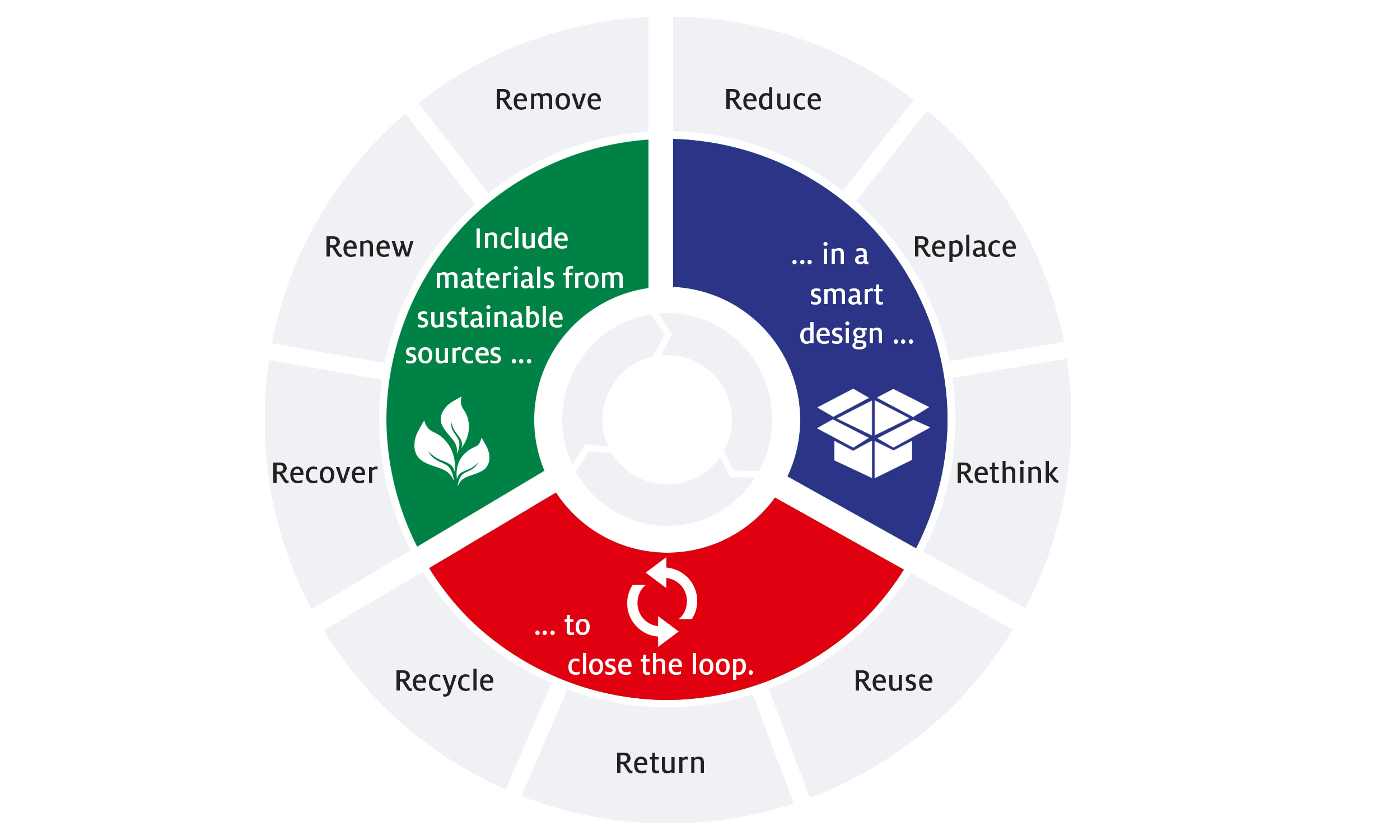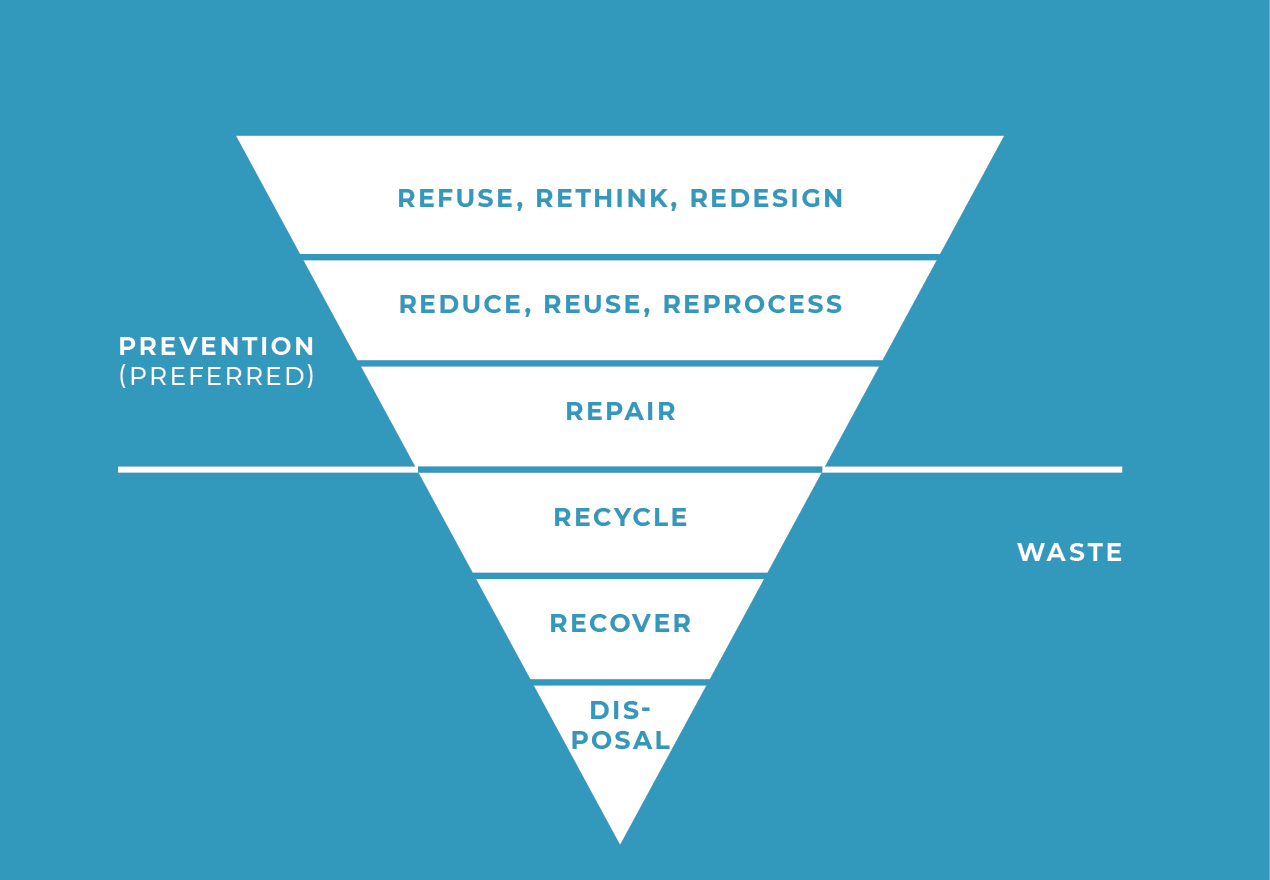• Set up senior management steering committee
• Audit global packaging programs
• Benchmark competition packaging sustainability
• Identify sustainability hotspots and opportunities
• LCA tool evaluation and selection
• Define internal sustainability objectives and goals through LCA
• Select metrics / indicators to track progress
• Full evaluation of packaging materials used throughout company, paired with suggestions for packaging redesign for more sustainable materials • Set a baseline for packaging sustainability data
• Deploy packaging sustainability strategy globally
• Start developing external goals (>2 years)
• Highlight success stories in annual corporate sustainability report.
> adeptpackaging.com/blog/sustainable-packaging-in-2022/
Ниже отрывок из статьи 2010года - если вы еще не поняли, насколько опаздываете.
Экологичность уже давно рядом. Упаковка составляет 30-35% от потока отходов и потребители обеспокоены вопросом «что с этим делать?». Они требуют меньше упаковки и такой, которая может быть также задействована для вторичной цели или может быть переработана или повторно использована. Некоторые даже хотят оставлять часть упаковки в магазине. Темпы роста ЭКО или зеленой упаковки превосходят традиционные материалы и исследования говорят, что эти темпы могут удвоиться. Кажется, что каждая компания ищет использования альтернативной “зеленой” упаковки и новые продукты и идеи возникают каждый день.
Рассмотрим не три, не четыре, а все возможные "R" в разработке экологичной sustainable упаковки:
Refill: Предложите контейнер или ёмкость, которую легко можно очистить и наполнить новым продуктом. Расход материала может быть снижен на 85-97%, если повторное наполнение производится из гибкой упаковки или лучше балком.
Reduce: Используйте меньше упаковки, насколько это возможно.
Recycle: Вступите в партнёрство с компанией, которая перерабатывает использованную упаковку.
Reuse: Возвратная упаковка – может быть отличным решением для локальных рынков сбыта.
Renew: Используйте упаковку из материалов, поступающих из возобновляемых природных источников.
Recover и Repair: Восстановление и ремонт - больше относится к индустриальной транспортной упаковке D2B, которой тоже не мало.
Repurpose: Разрабатывайте упаковку так, чтобы после использования продукта, упаковку можно было применить в других целях.
Какую бы опцию вы не выбрали, убедитесь, что разработанная упаковка не расходится с основным «эко» посланием вашего бренда или компании.
Пример от Хенкель

Советы и комментарии от Packaging Audit & Consulting:
Если ваше внедрённое упаковочное решение по Refill оказалось успешным на длительном отрезке, или вам удалось совместить Reduce и Renew, то вам удалось достигнуть седьмой «R» - вы сделали Replace, не говоря о том, что все ваши действия ознаменованы восьмой “R” - Rethink, и в итоге 'это Redesign :-)
Ваша компания уже должна быть готова ответить на ряд вопросов. Таких как:
- Можно ли переработать вашу упаковку после использования продукта?
Соответственно, этому предшествует вопрос, выбирается ли ваша упаковка в отдельный поток на автоматических линиях сортировки или как она попадает в поток вторсырья?
- Где я могу посмотреть рекомендации по раздельному сбору вашей упаковки?
- Назовите переработчиков вашей использованной упаковки;
(«Пятёрочка» начала маркировать свою готовую еду специальным знаком «Сдайте упаковку на переработку» и добавлять ссылку на сайт eco.5ka.ru, где подробно описывается, как нужно правильно утилизировать разные материалы – сортировать, мыть, в какой контейнер выбросить и другое.)
Вступайте в партнёрство прежде всего не с переработчиками вашей упаковки, а с компаниями, которые могут эффективно осуществить раздельный сбор и сортировку вашей упаковки.
Картинка про иерархию подходов к работе с отходами

Но это не все вопросы. Сами себе вы можете задать еще больше.
Collaborating with Suppliers for Responsibly Sourced/Sustainable Materials
Category: Foundational Processes, Packaging Development, Quality Optimization, Sustainability
As brands across all industries now recognize the importance of sustainability, packaging teams have more options than ever when it comes to sustainable materials. But using environmentally friendly materials alone isn’t the all-in solution brands need to demonstrate their commitment to sustainability. Packaging teams need to take a holistic view of packaging that accounts for its environmental impact from material extraction through end of life.
Collaborating with suppliers becomes crucial in this pursuit, as they play a pivotal role in providing packaging teams with environmentally friendly options that account for the material supply chain. This blog post explores the significance of supplier collaboration in achieving sustainable packaging, the benefits of responsibly sourced materials, exciting new developments in the field and insights on identifying a sustainable supply chain while navigating potential red flags.
Benefits of Supplier Collaboration
Effective collaboration with suppliers opens up a world of opportunities for packaging engineers. By involving suppliers in the early stages of the design process, packaging pros can tap into their expertise and gain valuable insights into the latest sustainable materials. Suppliers often have access to a wide range of innovative solutions, including bio-based and recycled materials, as well as cutting-edge technologies for reducing waste and carbon footprint. Some questions to ask suppliers include:
Do you offer any sustainably sourced materials or alternatives to traditional packaging materials?
Are your materials certified by recognized sustainability standards or third-party organizations?
Can you provide information on the carbon footprint and environmental impact of your materials?
Do you have a recycling or take-back program for your packaging materials?
How do you ensure social, ethical and environmental responsibility throughout your supply chain?
Identifying a Sustainable Supply Chain
Identifying a sustainable supply chain requires thorough evaluation and diligence. Look for the following indicators to ensure that your suppliers align with responsible sourcing practices:
Certifications and Standards: Research and verify if your suppliers hold certifications such as Forest Stewardship Council (FSC) for responsibly sourced wood. Look for compliance with standards like ISO 14001 for environmental management systems.
Transparency and Traceability: Seek suppliers who provide clear information on the origin of materials, manufacturing processes and any third-party audits they undergo. Traceability systems like blockchain technology can help ensure transparency across the supply chain.
Life Cycle Assessment (LCA): Collaborate with suppliers who conduct LCAs to evaluate the environmental impact of their products. This assessment considers factors like raw material extraction, manufacturing, transportation, and end-of-life disposal or recycling.
Circular Economy Initiatives: Look for suppliers actively involved in circular economy initiatives, such as closed-loop recycling systems or partnerships with recycling facilities.
The Power of Responsibly Sourced Materials
The use of responsibly sourced materials in packaging offers several compelling advantages. It helps reduce the environmental impact of the entire supply chain. By choosing materials that are sustainably harvested or manufactured, packaging teams can contribute to the preservation of natural resources, minimize deforestation and reduce greenhouse gas emissions. While many brands now recognize the importance of swapping out plastics for more environmentally friendly materials, switching to paper-based materials that aren’t responsibly sourced can lead to deforestation, swapping out one sustainability challenge for another.
Responsibly sourced materials can enhance a brand's reputation and build consumer trust. Today's consumers are increasingly conscious of their environmental footprint and prefer products that align with their values. By showcasing a commitment to sustainable packaging through the use of responsibly sourced materials, brands can differentiate their products in the market and attract eco-conscious consumers.
Additionally, responsibly sourced materials often offer improved functionality and performance. Many sustainable alternatives are designed to be lightweight, durable and have a lower carbon footprint than traditional materials. This not only reduces transportation costs but also helps optimize the packaging process, leading to increased efficiency and decreased waste.
Exciting Developments in Sustainable Packaging
The field of sustainable packaging continues to evolve rapidly, driven by innovative research and development efforts. Collaborating with suppliers allows packaging engineers to stay at the forefront of these developments and incorporate them into their designs.
One exciting trend is the rise of biodegradable and compostable materials. Biopolymers derived from renewable sources, such as cornstarch or sugarcane, are gaining popularity as sustainable alternatives to conventional plastics. These materials can break down naturally, reducing the environmental impact of packaging waste.
Another promising area is the development of packaging made from recycled materials. From post-consumer plastics to paper and cardboard, recycled materials offer a closed-loop solution that minimizes waste and conserves resources. Collaborating with suppliers who specialize in recycling and upcycling can provide access to cutting-edge technologies and materials in this domain.
Furthermore, advancements in active and intelligent packaging are revolutionizing the industry. These solutions utilize technologies such as smart sensors, bio-based coatings and antimicrobial agents to extend the shelf life of products, reduce food waste and improve overall sustainability.
Red Flags to Look Out For
While engaging in supplier collaboration, it is essential to remain vigilant about potential red flags that indicate unsustainable practices:
Lack of Transparency: If a supplier is unwilling to share information about their sourcing, manufacturing processes or certifications, it may be a sign that they are not prioritizing sustainability.
Non-Compliance with Regulations: Suppliers who disregard environmental regulations or fail to meet industry standards raise concerns about their commitment to sustainability.
Excessive Packaging Waste: Suppliers who use excessive packaging materials or fail to optimize packaging design for efficiency and waste reduction may not prioritize sustainable practices.
Limited Focus on Social Responsibility: Sustainable packaging extends beyond environmental aspects. Ensure your suppliers demonstrate a commitment to fair labor practices, worker safety and community engagement.
While there is no substitute for knowledgeable, sustainability-minded packaging engineers, collaborating with suppliers can be a vital step for driving environmentally friendly innovation. By asking the right questions, identifying a sustainable supply chain, and remaining vigilant for red flags, packaging teams can ensure their work aligns with their company’s sustainability goals.
> adeptpackaging.com/blog/collaborating-with-suppliers-for-responsibly-sourced-sustainable-materials
Разработка общей Sustainability повестки в компании (вебинар на русском языке) https://www.youtube.com/watch?v=DGg0jLelVjw и роль упаковки в ESG на примере Х5.
Спросите у практика - Дмитрий Смирнов, руководитель направления рециклинга пивоваренной компании «Балтика»
https://adeptpackaging.com/portfolio/sustainability-strategy-development/
> adeptgroup.wistia.com/medias/qflmj49qs8
https://www.robertlilienfeld.com/strategic-planning
BillerudKorsnäs о разработке программы
https://info.billerudkorsnas.com/hubfs/Managed Pa ... ablePackagingProgram_eBook.pdf
https://adeptpackaging.com/resource-library-sustainability
https://sustainablepackaging.org/goals/
https://sustainablepackaging.org/goals/?member
https://plastinfo.ru/information/articles/738/page1/
Интереснейший пример мог бы быть по reprocess или альтернативному использованию Consol Solar Jar > news.unipack.ru/94627